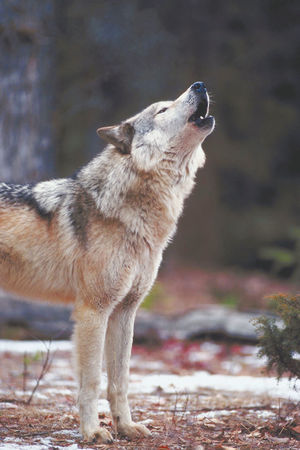
In Short PEOPLE All Dogs will have some form of wolf DNA therby protecting Wolves under Animal Abuse Laws….Cross-breed means to mate two different species together. Wolfdog and coydog are names of two of the cross-bred variations. Carl Linnaeus. who defined the term species defined it that if they can mate and have babies then they are the same species. What is the deal? Why are not dogs, wolves, coyotes, etc all the same species?
Is it legal to confiscate a womans dogs simply because they may have wolf DNA, which after a new DNA study now says that dogs are wolves, that all dogs have came from wolves, depending on which wolf breed either those in Europe, or those in China as proven by new DNA studies.
Furthermore, does that now protect Wolves as Dogs under current laws in all 50 states under animal cruelty laws, which in most states are considered a Felony…. With the way that courts have made decisions based on DNA Laws…. there are now thousands of precedent setting cases where DNA has already been used.
Tuesday morning, the Yolo County Board of Supervisors took a closer look at the dog debate, with the owner, Shandale White defending her animals.
Watch report: Yolo County wolf ban prompts woman’s 7 dogs to be seized
“There was a complaint by a member of the public and then there was another member of the public that sent us the Craigslist advertisement for the wolf hybrids,” said Yolo County spokeswoman Beth Gabor.
White said she’s had some of her dogs as far back as 2007, but it wasn’t until about a year ago when she moved to her new home in Esparto that the problem started.
Last month, animal services came to her home to seize eight of her dogs, believed to be wolf hybrids.
The wolf-hybrid ordinance that bans the animals in the county dates back to 2007.
Gabor said the animals were presented as hybrids in a Craigslist advertisement and DNA testing confirmed one dog was indeed part wolf.
White said she got her dogs from shelters and breeders, and they were all husky, shepherd, and malamute mixes — but not part wolf.
Riya, a husky-German shepherd mix, did get released, but White is fighting to get the rest of dogs back.
“They’re like kids to me,” White said. “I’m going to do everything I can. I’ll do anything in my power to get my babies back; they’re my family.”
For now, the dogs are being held at Yolo County Animal Services before heading to rescue centers.
DNA TEST RESULTS BElOW
On Thursday in the journal Science, Dr. Wayne, Dr. Shapiro and their colleagues report on the first large-scale comparison of DNA from both living and fossil dogs and wolves. They managed to extract DNA from 18 fossils found in Europe, Russia and the New World. They compared their genes to those from 49 wolves, 77 dogs and 4 coyotes.
The scientists examined a special kind of DNA found in a structure in the cell called the mitochondrion. Mitochondrial DNA comes only from mothers. Because each cell may have thousands of mitochondria, it is easier to gather enough genetic fragments to reconstruct its DNA.
The scientists did not find that living dogs were closely related to wolves from the Middle East or China. Instead, their closest relatives were ancient dogs and wolves from Europe.
“It’s a simple story, and the story is they were domesticated in Europe,” Dr. Shapiro said.
Dr. Shapiro and Dr. Wayne and their colleagues estimate that dogs split off from European wolves sometime between 18,000 and 30,000 years ago. At the time, Northern Europe was covered in glaciers and the southern portion was a grassland steppe where humans hunted for mammoths, horses and other big game.
“Humans couldn’t take everything, and that was a great treasure trove,” Dr. Wayne said. Some wolves began to follow the European hunters to scavenge on the carcasses they left behind. As they migrated along with people, they became isolated from other wolves.
Dog evolution experts praised the scientists for gathering so much new data. “I think it’s terrific,” said Adam Boyko, a Cornell biologist. Dr. Savolainen agreed. “I think it’s a fantastic sample,” he said.
But Dr. Savolainen said the analysis was flawed. “It’s not a correct scientific study, because it’s geographically biased,” he said.
The study lacks ancient DNA from fossils from East Asia or the Middle East, and so it’s not possible to tell whether the roots of dog evolution are anchored in those regions. “You just need to have samples from everywhere,” Dr. Savolainen said.
He also rejects Dr. Wayne’s argument that interbreeding in East Asia creates an illusion that dogs originated there. Dr. Savolainen points out that the study suggesting interbreeding was based on a wolf from northern China. “What they need to have is samples from south China,” he said.
There’s just one catch. South China is now so densely settled by people that no wolves live there. A similar problem applies to the fossil record.
“It may be impossible to go this way,” Dr. Savolainen said.
Dr. Wayne is not quite so pessimistic. He and his colleagues are hoping to widen their scope and find more DNA from fossils of dogs outside of Europe, while also looking at the genes of living dogs that might hold important clues. Yet he thinks it unlikely that the new evidence will change the basic conclusion of his latest study.
“But there have been so many surprises in the history of this research on dog domestication that I’m holding my breath till we get more information,” Dr. Wayne said.
Wolf to Dog: Scientists Agree on How, but Not Where – The New York Times.